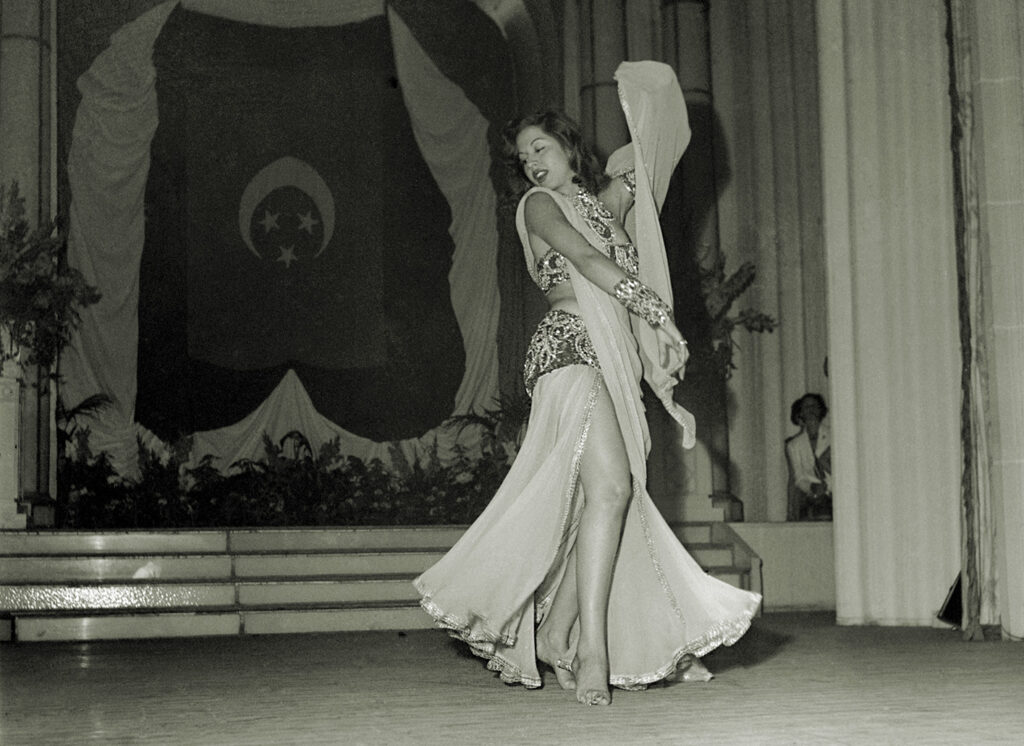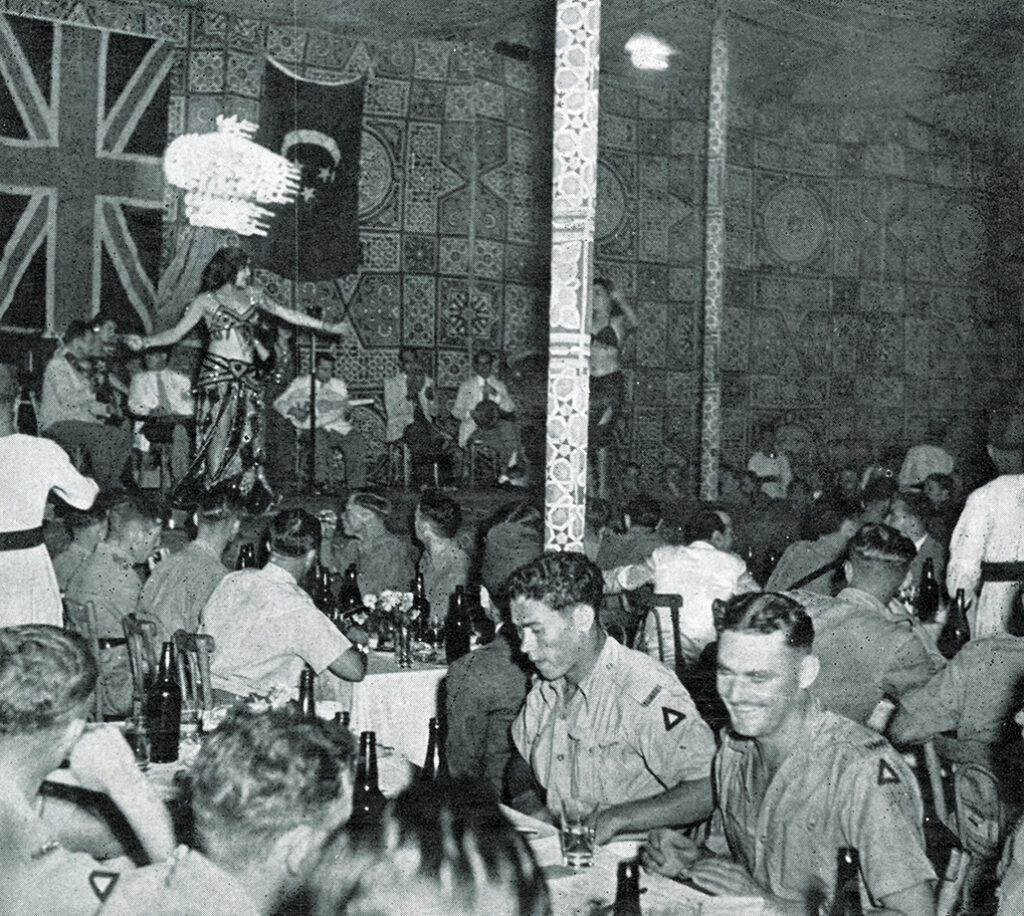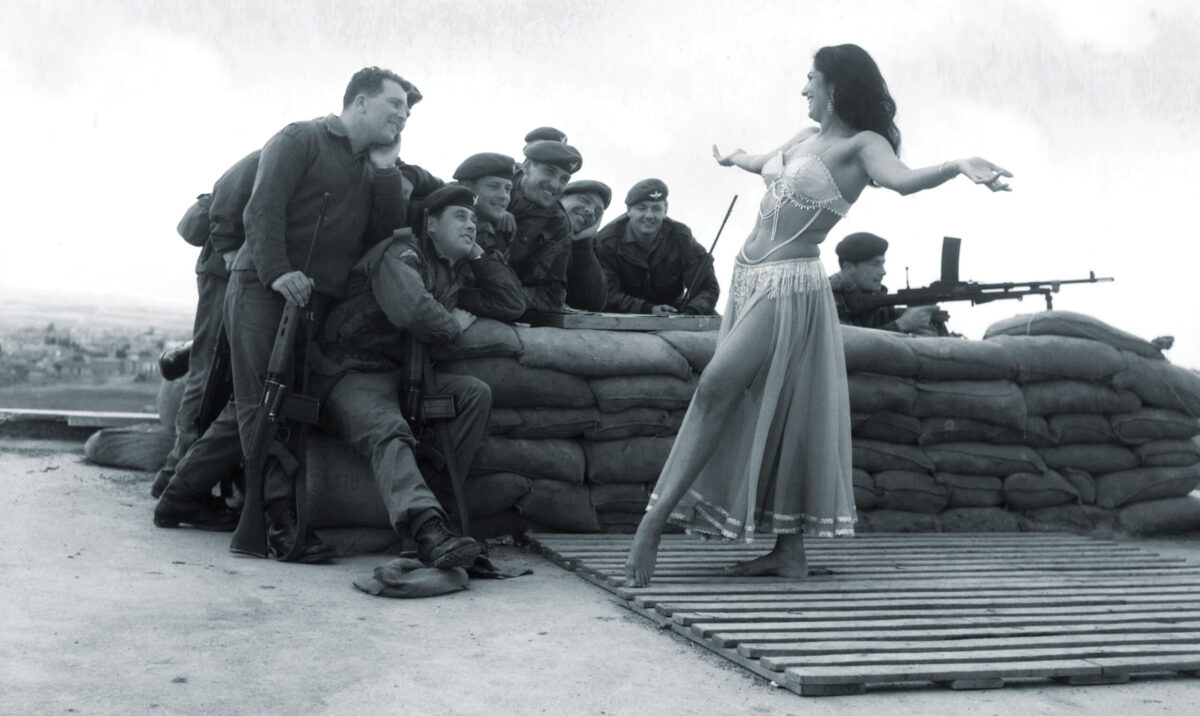In 1942, British authorities in Cairo arrested an Egyptian dance superstar for espionage. Her name was Hekmet Fahmi. Allegedly a nationalist with connections to Anwar el-Sadat, Gamal Abdel Nasser, and members of the Egyptian revolutionary Free Officers Movement, Fahmi had gained access to top secret intelligence from a well-informed British lover who worked at GCHQ and had passed this information to a pair of German spies who had managed to infiltrate Cairo.
At least, that was what Fahmi stood accused of. The espionage threat was credible enough for British authorities to put Egypt’s most famous dancer behind bars for more than two years. Her career would never recover. Yet Fahmi’s story remains a captivating part of World War II history, not only because of her alleged espionage but because of the talent that likely worked to her advantage as a spy: Egyptian cabaret belly dancing.
An Elusive Art
Egyptian belly dance, known as raqs sharqi, has a history stretching back thousands of years. Ancient Egyptian temple reliefs from the days of the pharaohs contain strikingly similar imagery to modern Egyptian belly dancing, such as women dancing wearing hip scarves to the accompaniment of clarinets and drums. While belly dancing expressed itself in different forms over time, including group dancing and male dancing, female belly dancing proved the most enduring and popular incarnation of raqs sharqi. Historically seen as a desirable trait for wives, brides-to-be were taught the art of belly dancing so that they could dance for their husbands. Some women became professional dancers to entertain primarily male audiences.

Belly dance is a highly disciplined dance style comparative to a sport. It is a full body exercise that requires dancers to move different muscle groups independently. Essential to Egyptian-style belly dance, a scarf worn around the hips accentuates isolated hip and waist movements and adds flair to performances. Aside from complex hip, waist and chest movements, the dance also incorporates fluid arm and finger movements. To gain the amount of flexibility, precision and rhythmic grace to belly dance successfully takes rigorous practice. Once the essential basic movements are mastered, a dancer may weave together endless combinations and improvisations to form complex choreography. The dance can be performed to any type of music and also be highly dramatized if desired. Special types of belly dance performances can include candle dances, sword dances, floor dancing (performed on one’s knees and sometimes bending backwards), and the ever-popular veil dances, all of which require finesse.
Appeal to Foreigners
Foreigners who visited Egypt were captivated by belly dance performances they witnessed. Although Western paintings and illustrations from the 19th century often portrayed “oriental dancers” with colorful garb and bare stomachs, religious convictions saw female belly dancers in Egypt cover up more over time. The essential hip scarves were still worn but bare waists became less common and dance movements became more restricted as time passed.
Belly dance experienced a Renaissance in the 1920s thanks to the creative genius of Badia Masabni, popularly known as Madame Badia. Originally from Syria, Badia spoke five languages and traveled in many countries throughout the world. Drawing inspiration from French cabaret performances, Badia realized how to create an elegant and exciting new dance style fusing the best of Egyptian belly dance traditions with Western flair.
Cairo’s Favorite Casino
With innovation and entrepreneurial skills, Badia set up a nightclub in Cairo called the Casino Opera, also known as the Casino Badia: an exclusive venue that also functioned as a training school to teach her new style of dance to adventurous young local women. Egyptian cabaret style belly dance was born.
Badia revolutionized belly dance. She introduced sweeping changes to dance costume, modeling her dancers’ costumes on two-piece French cabaret outfits with decorative brassieres, short hip scarves, and plenty of sequins. The dancers performed in high heels and sometimes barefoot. Badia developed new signature moves in the dance; she also allowed the dancers a wider field of movement and mixed signature Egyptian techniques with Latin dance styles and ballet. Badia also upended music, blending Western orchestral instruments like violins, cello and accordion with Egyptian traditional instruments such as clarinets and tabla drums to create powerful and enchanting background music for performances. The results were fantastic. Badia’s new cabaret dance style became all the rage in Cairo and influenced other schools of dance.
Cabarets offering belly dance performances became magnets for British troops garrisoned in Cairo both before and during World War II. Badia’s Casino Opera was one of the most popular hotspots. Egypt’s King Farouk was a patron as was Randolph Churchill and many other famous personages. Many British soldiers in Cairo were eager to enjoy the company of attractive Egyptian females in nightclubs as well as to drink and socialize. Cabarets like Badia’s Casino Opera in Cairo were great places to mix—and to spy.

During World War II, many Egyptians were sympathetic to the Germans due to a general dislike at living under a de facto British occupation. We will probably never know how many Egyptian women who gained access to influential military and government officials through nightclub entertainment passed information they learned to German intelligence operatives, spurred by a desire to further the cause of Egyptian independence.
Accused spy Hekmet Fahmi herself was trained at the Casino Opera and was one of Madame Badia’s star pupils. Badia herself was rumored to have engaged in espionage, although for whom she may have been spying remains a mystery.
What is clear is that the special dance style that Badia and her proteges wielded to enchant their audiences has had staying power. The Casino Opera debuted many famous Egyptian belly dancers and movie stars, such as Samia Gamal and Taheyya Kariokka, icons of 1950s Egyptian cinema. These talented and graceful women remain an inspiration for practitioners of Egyptian cabaret belly dance, a style which spread from Cairo all over the world and remains popular today.






